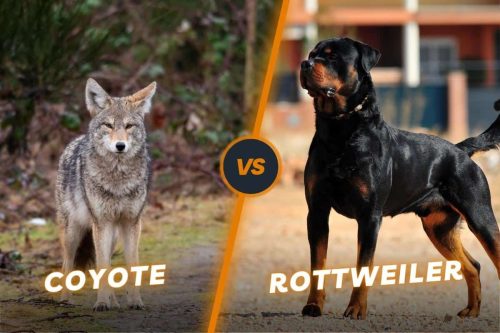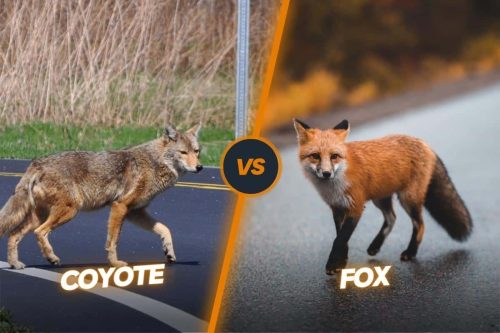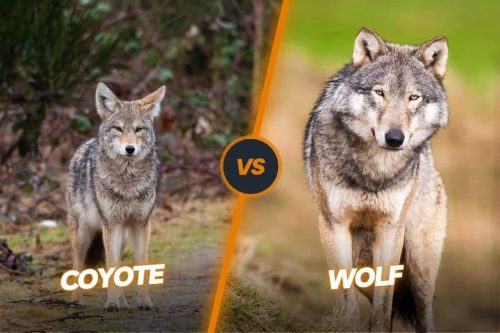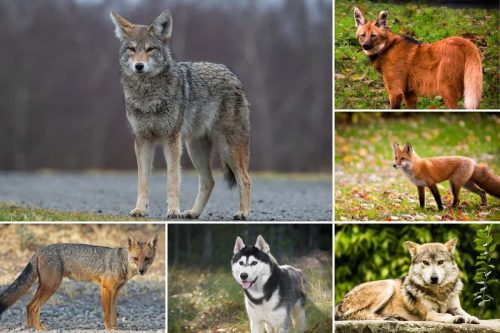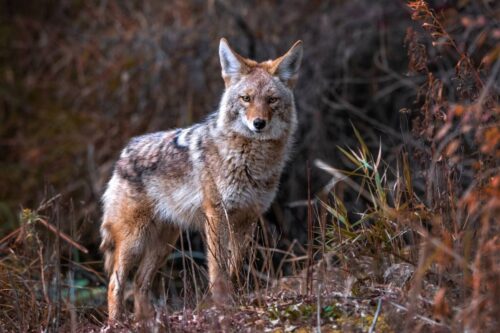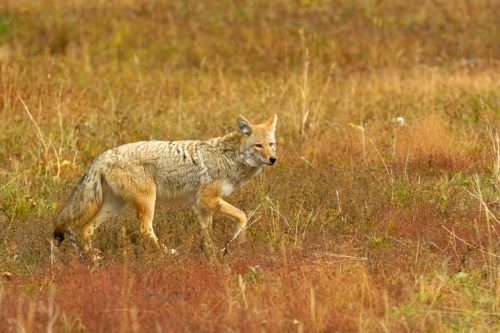Coyotes In Illinois: A Look At Urban-Wildlife Interaction In IL State
Coyotes have been the main source of fascination for wildlife observers for many years in the state of Illinois. With the growing population of these wild dogs, they are available now in every nook and corner of the state. It has become quite common to see them in the urban and suburban areas of the state. That’s why they have become the most maligned animal in Illinois due to many misconceptions about them.
Coyotes are normal wild dogs and are highly beneficial for the ecosystem of the state. These animals are not a threat to human beings if people give them proper space and do not go close to them or feed them regularly. In this article, we are going to explain the behavior of the coyote in Illinois and how we can remove all the misconceptions about them and have a good co-existence with these wild animals.
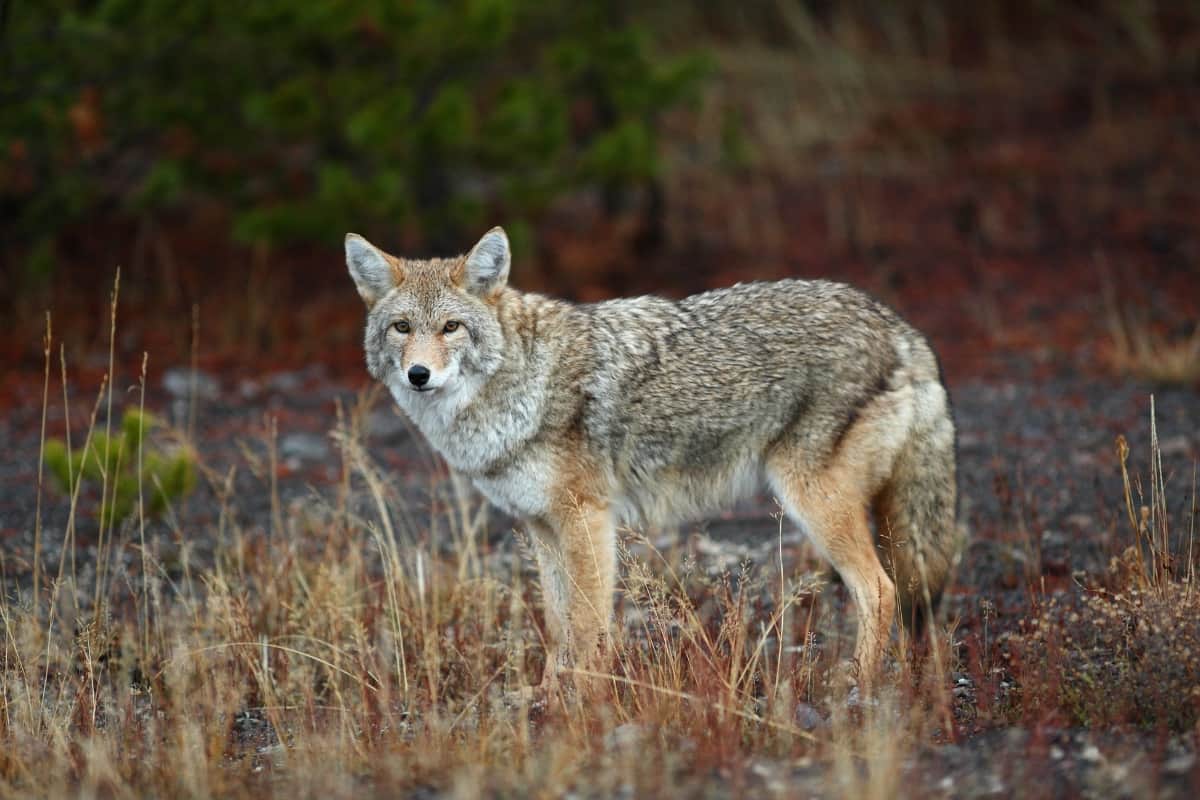
Contents
- Historical presence of the coyotes in Illinois
- Population of the coyotes in Illinois
- Habitat and geographical range of the coyote in Illinois
- How Does Coyote Impact Illinois Ecosystem?
- Health risks due to the presence of coyotes in Illinois?
- Rules and regulations for hunting coyotes in Illinois
- Conclusion
Historical presence of the coyotes in Illinois
As European settlers moved westward and began altering landscapes for agriculture and development, they inadvertently created more suitable habitats for coyotes. The clearing of forests, the creation of open fields, and the disruption of ecosystems allowed coyotes to expand their range eastward. By the late 1800s, coyotes had begun to establish populations in Illinois.
Changes in land use, the decline of native predators like wolves, and the reduction of large predators due to human activities contributed to the expansion of the coyote’s range. During the 20th century, the adaptability of coyotes became even more evident. They were able to thrive in a variety of habitats, including rural, suburban, and urban areas.
Their ability to exploit various food sources and adapt to human-altered environments allowed them to successfully establish populations throughout Illinois. Today, coyotes are a common and widespread presence in Illinois. They are found in rural areas, suburban neighborhoods, and even urban environments. Their adaptability and resilience have enabled them to coexist alongside human populations and other wildlife.
Also, read: Are there coyotes in Alabama?
Population of the coyotes in Illinois
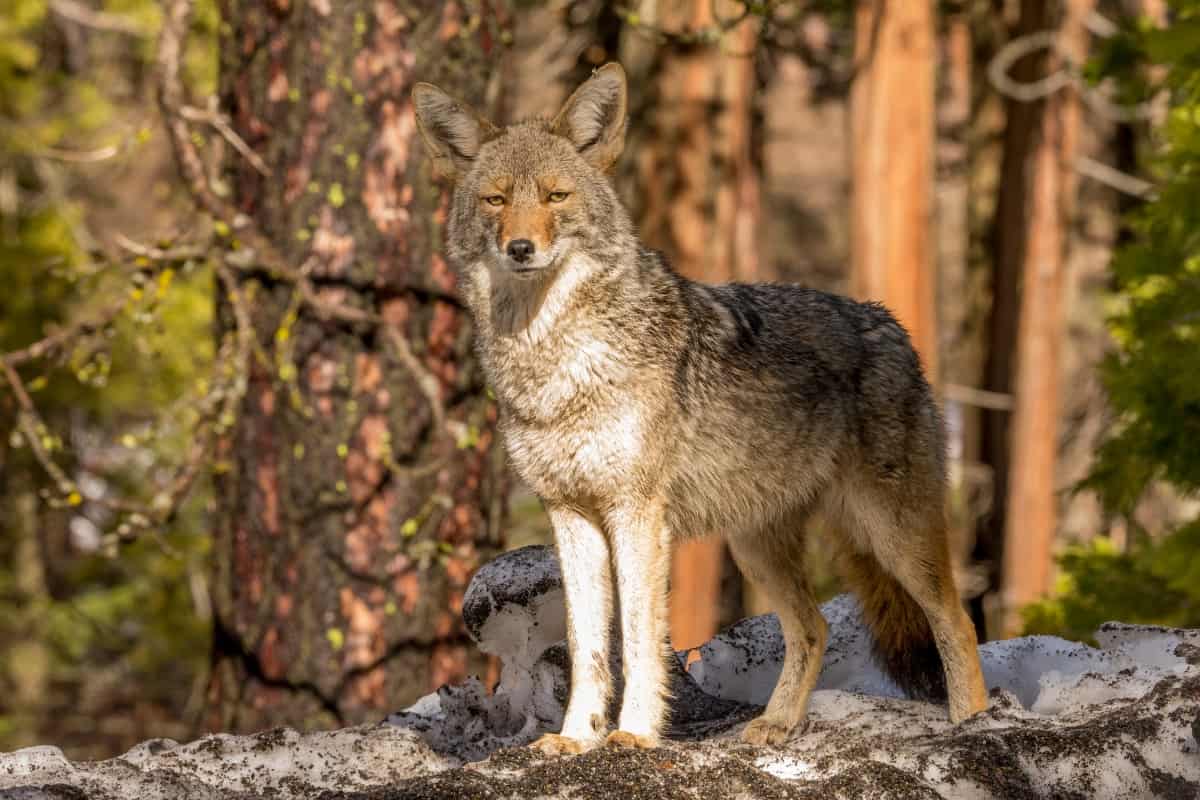
Coyotes have established a stable and widespread presence in the state. Coyote populations can be challenging to estimate accurately due to their adaptability and ability to thrive in a variety of habitats, including urban, suburban, and rural areas. Wildlife agencies and researchers typically use a combination of methods such as tracking, surveys, and camera trapping to monitor and estimate coyote populations.
We may not exactly know about the size of their population in the state but these wild animals have proved very beneficial for the state and have been successfully controlling the population of rodents and pests from getting out of control. The conflict between human beings and coyotes has only become quite common due to the encroachment of human development on the habitat of the coyotes.
Are coyotes endangered? Also, Learn about coyote populations in this article.
Habitat and geographical range of the coyote in Illinois
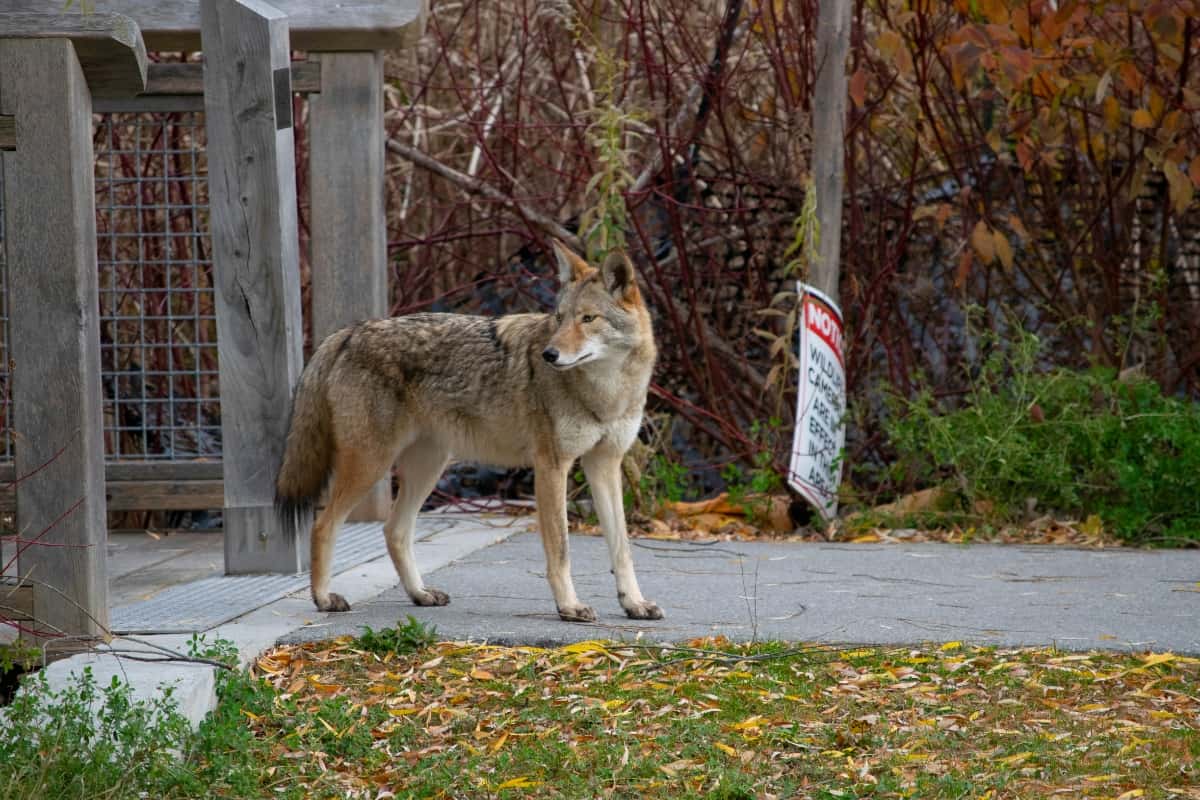
Coyotes in Illinois are highly adaptable animals that can be found in a wide range of habitats due to their ability to exploit various food sources and adapt to different environmental conditions. Some common habitats where coyotes can be found in Illinois are Urban and Suburban areas as they have become adept at living in and around human-populated areas. They can be found in neighborhoods, parks, golf courses, and other developed landscapes.
Coyotes often inhabit agricultural areas, including fields and pastures. They may prey on small mammals like mice and rabbits, as well as scavenge for food in and around farms. They can also be found in wooded areas, especially those adjacent to open spaces. These habitats provide cover and potential prey, allowing coyotes to establish territories.
Open grasslands and prairie areas can also support coyote populations. They can find prey such as rabbits, ground squirrels, and insects in these habitats. Areas along rivers and streams can provide water sources and habitat diversity for coyotes.
Riparian zones often have a mix of vegetation and open spaces that coyotes can use for cover and hunting. Highways, railways, and other transportation corridors can also provide easy travel routes for coyotes to move between different areas.
How Does Coyote Impact Illinois Ecosystem?
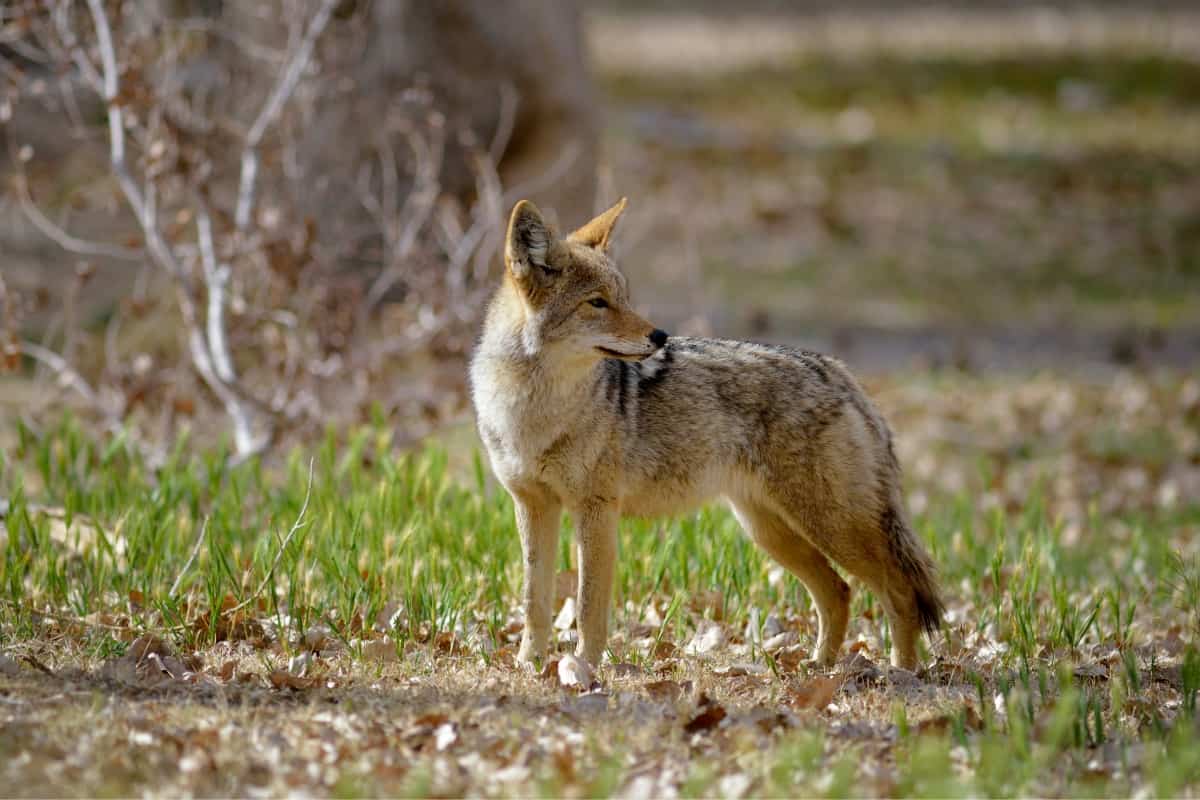
Coyotes can have both direct and indirect impacts on local ecosystems in Illinois and elsewhere. Their presence and behavior can influence various aspects of the ecosystem, including populations of other animals, plant communities, and even human interactions. Here are some ways in which coyotes can impact local ecosystems:
Predation
Coyotes are opportunistic predators, and they primarily feed on small mammals like mice, rabbits, and ground squirrels. By controlling the populations of these prey species, coyotes can help maintain a balance within the ecosystem. They can also help manage populations of rodents that might otherwise become pests in agricultural and urban areas. By consuming rodents, they also help in preventing the transmission of diseases by mice and rats.
Competitive exclusion
Coyotes may compete with other predators, such as foxes, raccoons, skunks, feral cats, and smaller carnivores, for resources like food and territory. In some cases, coyotes can outcompete these species, leading to changes in predator dynamics within the ecosystem.
According to the research of the coyote project in Illinois that by limiting the population of these mesocarnivores, coyotes help in increasing the population of the songbirds and ground-nesting birds in the area. The higher bird population also helps in improving the biodiversity of the area.
Mesopredator Release
In areas where larger predators like wolves have been extirpated or significantly reduced, coyotes can become the top predator. This can lead to a “mesopredator release,” where populations of smaller predators that coyotes would normally suppress increase in numbers. This, in turn, can have cascading effects on other species within the ecosystem.
Scavenging
Coyotes are effective scavengers and can help clean up carrion (dead animals). Their scavenging behavior can help prevent the spread of disease by removing carcasses that could otherwise attract disease vectors.
Positive Human Interaction
The presence of coyotes in urban and suburban areas can lead to human-wildlife conflicts. This can influence how people perceive and interact with wildlife and may lead to changes in public attitudes toward predators and conservation efforts.
Influence on Other Wildlife
The complex interactions between coyotes and their prey can have far-reaching effects on the entire food web. For instance, changes in small mammal populations can affect the predators and prey of those mammals, causing a chain reaction throughout the ecosystem.
Health risks due to the presence of coyotes in Illinois?

Coyotes in Illinois, like other wildlife species, can carry certain health risks. While the risk of disease transmission from coyotes to humans is generally low, it’s important to be aware of potential risks and take precautions when interacting with wildlife.
According to the Wildlife Illinois report, coyotes can transmit diseases like mange, parvovirus, and canine distemper. These diseases could be transmitted to the animals like cats and dogs and sometimes also to human beings. These diseases might not be fatal but can cause severe itching, and sometimes abrupt hair loss. Coyotes with mange are highly likely to die after some time as there are chances that they could also be infected by some other severe fatal diseases.
Rules and regulations for hunting coyotes in Illinois
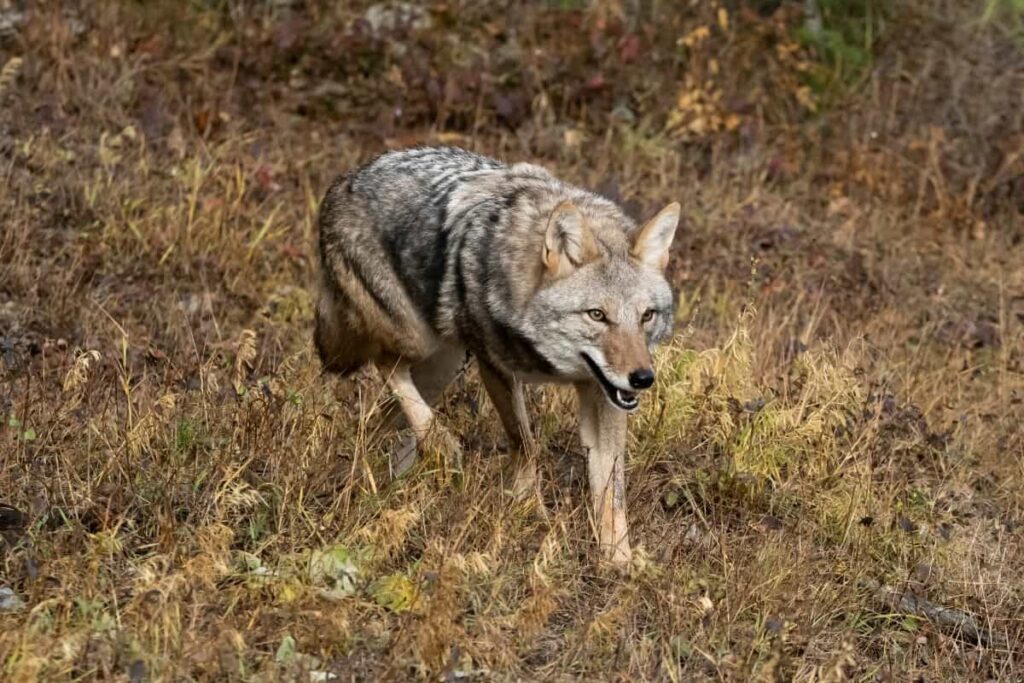
Hunting coyotes in Illinois is regulated by the Illinois Department of Natural Resources (IDNR). If you want to do hunting in the state then you must be familiarized with all the state hunting laws.
Hunting License
You typically need a valid hunting license to hunt coyotes in Illinois. The type of license required may depend on your residency status and age. Licenses can be obtained through the Illinois Department of Natural Resources.
Seasonal limit
There is no seasonal limit as you can hunt coyotes year around except during the first and second firearm deer seasons. Throughout the year, you can hunt coyotes half an hour before the sun rises and half an hour after the sunset. However, no time limit will be applied in the period between 10th November and 15th March.
Nighttime hunting
You can hunt & trap coyotes in the nighttime but you need to have a habitat stamp and hunting license for this purpose.
Weapons restrictions
Coyotes can be hunted using various methods, including firearms, archery equipment, and predator calls. You may also deploy dogs and utilize legal rifles for this purpose.
Bag Limits
There are typically no bag limits for coyotes in Illinois. You can hunt as many coyotes as possible in the specified time period.
Private Land Permission
If you plan to hunt on private land, it’s important to obtain permission from the landowner before hunting coyotes. Trespassing without permission is against the law. If by any chance the hunting dog goes into the property where hunters are not allowed to hunt, then the hunters are not legally allowed to follow the dog.
In this regard, in Illinois and some other states, purple paint on trees or fence posts is used as a way to mark private property boundaries and indicate that entry without permission is prohibited. This method is an alternative to using traditional “No Trespassing” signs. The concept is known as “purple paint law.”
Conclusion
The presence of coyotes in Illinois serves as a testament to the remarkable adaptability of these resilient creatures. Over the years, these resourceful predators have expanded their range from their traditional habitats in the western parts of North America to the diverse landscapes of Illinois. Their ability to thrive in urban, suburban, and rural environments underscores their ecological significance and their role in maintaining balance within local ecosystems.
Coyotes in Illinois have a multifaceted impact on their surroundings. As adept predators, they help control populations of small mammals, which contributes to the overall health of the ecosystem. Their presence also brings about cascading effects on food webs, influencing the behavior of other animals and even impacting plant communities.

Izzy is an experienced ranch worker who has a passion for exploring nature and getting up close to wildlife. With her connections to various animal organizations, Izzy is well-versed in animal care and rehabilitation.

